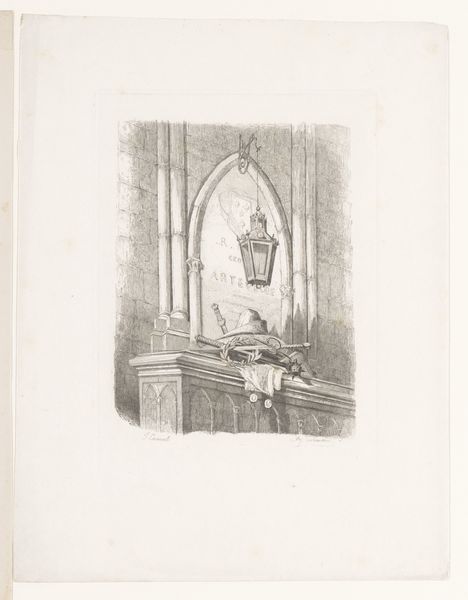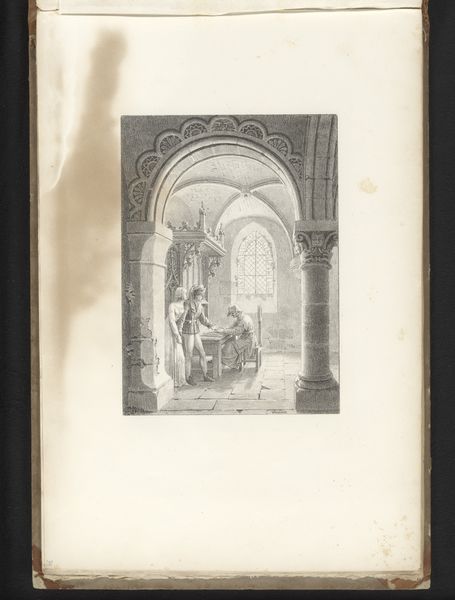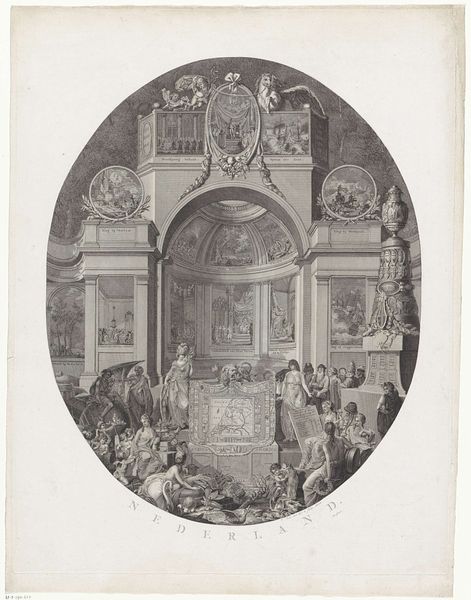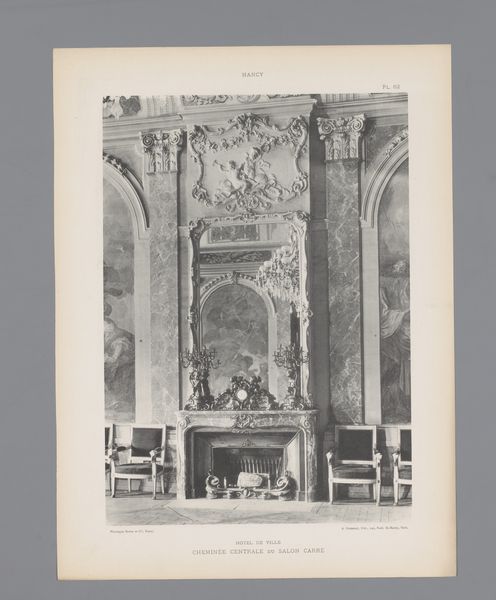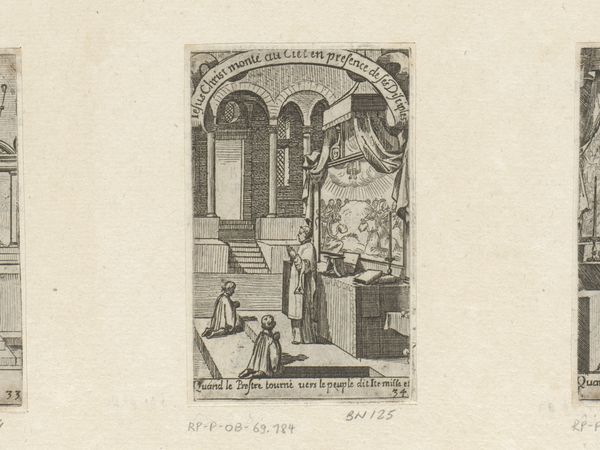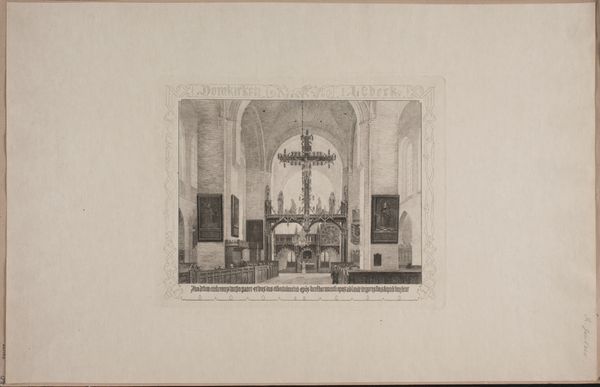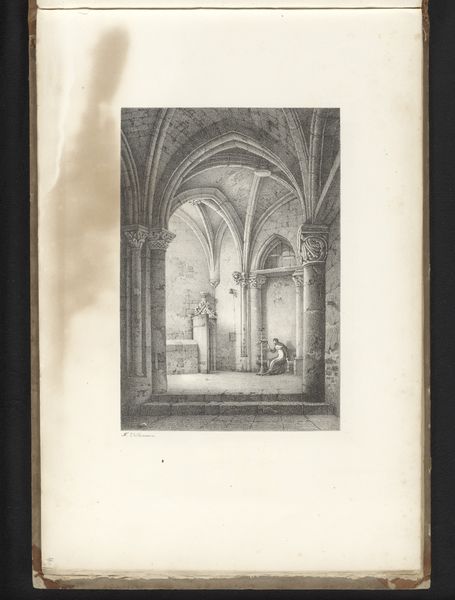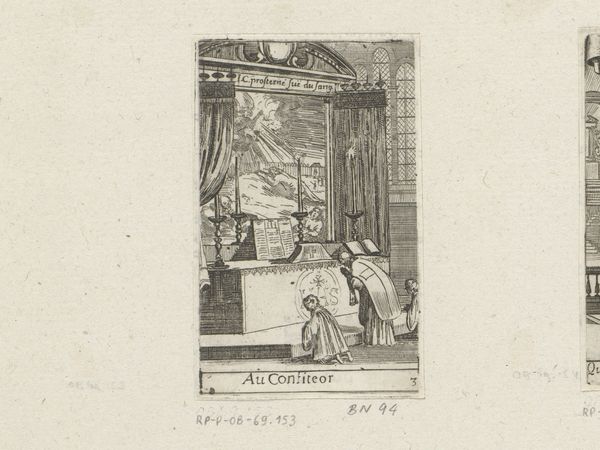
print, engraving
#
portrait
#
baroque
# print
#
genre-painting
#
history-painting
#
engraving
Dimensions: height 159 mm, width 104 mm
Copyright: Rijks Museum: Open Domain
Curator: This engraving by Caspar Jacobsz. Philips from 1747, titled "Bureau waarop het portret van Antoni van Leeuwenhoek," presents quite an intriguing tableau. Editor: Intriguing indeed! At first glance, the starkness of the lines, the almost architectural quality of the setting, evokes a solemn reverence. Curator: It's certainly a space designed for contemplation, framed by that Baroque sensibility. Look how the engraver has situated the tribute to Leeuwenhoek within a classical, almost temple-like structure. We must understand the impact Leeuwenhoek had on science, specifically his discoveries using the microscope, to really decode this symbolic choice of portraying science as worthy of classical architectural importance. Editor: I agree! The lines composing the architecture guide your eye upwards to that central plaque bearing Leeuwenhoek's portrait and scientific dedication, but you are right; without grasping his scientific importance, it can just seem aesthetically cold. Also, notice the textures and varying depth of field achieved solely through lines—remarkable technique! The shadows, rendered by dense, parallel lines, feel almost tangible. Curator: Tangible indeed. It’s crucial to understand Leeuwenhoek's work wasn’t always immediately accepted, so representing it so grandly can feel subversive. We should consider the rise of empirical thought at this time and the shift towards viewing the world through observation. The playful cherubs scattered around add to this sentiment. What appears at first glance is a sombre atmosphere shifts towards a dynamic allegory celebrating knowledge! Editor: A very astute reading. Those cherubs animate the scene; observe their individual poses and activities, leading us directly into a detailed world. Considering the rigid style that otherwise constructs the space, they almost come alive! Curator: Absolutely. Through these historical and social narratives—through its commitment to elevating figures like Leeuwenhoek and promoting inquiry—art encourages engagement in revolutionary ideas. Editor: And through these engagements with artistic execution, we, as viewers, find beauty not just in the object but the idea itself. It’s inspiring!
Comments
No comments
Be the first to comment and join the conversation on the ultimate creative platform.

